THE STORY OF MULLOKA THE AUSTRALIAN MURRAY COD
By Coral Hull
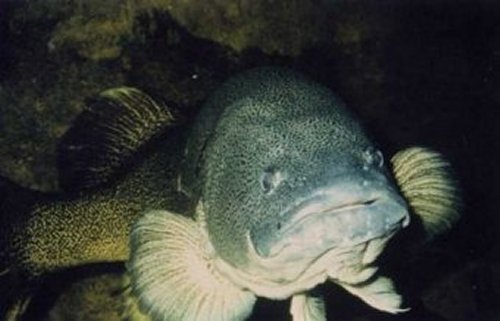
[Above] Mulloka in the tank at Snob's Creek where he was imprisoned for 12 years. (Photo by Shaun Poyser, 1996)
"Way back then a hundred years and more ago, there were giants in the land: Murray Cod so monstrous that the old bushies would take them on a chain and ship's anchor. Then they'd hitch up a team of a dozen bullocks to drag them from the drink. And then they'd fight. But no matter how hard those bullocks pulled, a lot of those big old cod would just never give in."
Gary Tippet, The Sunday Age
A SUMMARY OF MULLOKA'S CAPTURE AND EVENTUAL RELEASE
The plight of Mulloka was first brought to my attention when Patty Mark (Editor of Action Magazine) showed me some film footage taken by herself and animal rights activist Diana Simpson, inside the Snob's Creek Centre. I was immediately touched by the plight of the giant inland river fish who had been taken from his natural habitat and put into a tiny tank for public display. As a result I gradually compiled information on the Murray Cod over a period of two years. I also conducted research on the Murray Cod in general. My article on Mulloka was published simultaneously in Action Magazine and on the Animal Watch Australia website in 1998. Due to the overwhelming response from the Australian and international public, what resulted was a public outcry for Mulloka's release.
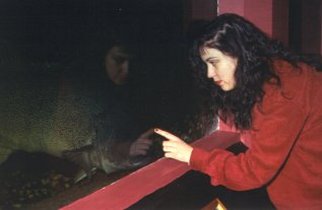 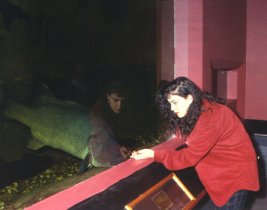
[Above Left to Right] I became very attached to Mulloka over a period of two years and swore that I would not give up on him until he was back where he belonged, which was in his natural river environment. Coral Hull with Mulloka. (Photos by Sean Poyser, 1996)
On the 11th August, 1998 I recieved a letter from Philip R Davis MLC who was the Parliamentary Secretary of Natural Resources in East Melbourne, Victoria, Australia. In the letter Mr. Davis stated the following; "... I am happy to reassure you that the process of re-acclimating the fish prior to release into the wild is progressing well under the capable supervision of appropriately experienced personnel at the Marine and Freshwater Resources Institute (MAFRI), Snob's Creek ... As previously indicated, Mulloka was transfered from the holding tank at the Freshwater Discovery Centre campus of MAFRI. The actual date of transfer was 23 March, 1998. For security reasons we have not revealed the actual location of the relevant impoundment, so as to ensure the physical well being of the fish .... Following adaptation over a period of a few months to the free range, natural feeding regime in the impoundment, we expect that Mulloka will be able to be finally released into the wild, probably in the near future."
I spoke to Geoff Gooley (MAFRI) who assured me that Mulloka was indeed released with no identification, no tagging transmitter and with no services required. Mr Gooley said that it was "not appropriate to tag him". We ended off our phone conversation by Mr Gooley saying that The Marine and Freshwater Resource Institute was simply responding to an issue that had been brought to their attention. Mr Gooley said, "The broader issues deal with fish in captivity for educational purposes and Mulloka's imprisonment was unacceptable in the context of the issues presented to us".
After a two year campaign Mulloka was finally released on Tuesday 1st September, 1998. To see the letter regarding Mulloka's release click here. Mulloka was set free into Lake Eildon and the Goulburn River in north eastern Victoria, Australia. Lake Eildon is a large artifical impoundment consisting of a series of major flooded valleys of the major tributaries of the upper Goulburn river systems.
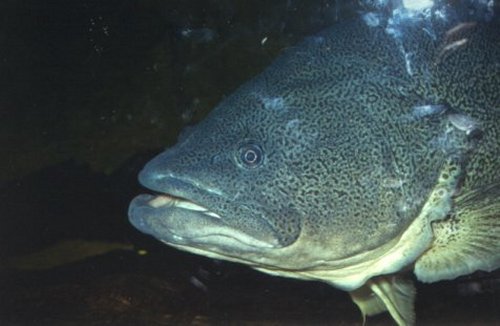
[Above] Mulloka in the Tank #2. (Photo by Sean Poyser, 1996)
Geoff Gooley assured me that the environment was within the natural range of the Murray Cod, that being, "a large temperate body of water that provides good suitable habitat, water temperature and an abundance of food". He went on to say that "There are other Murray Cod from a remnant natural population and more recently stocked juveniles in this body of water". So it is here that Mulloka will now spend the rest of his life.
HOW WAS THE BIG FISH SET FREE?
Mulloka was taken out in a boat into one of the river dams of the lake and released into nice deep water of the Eildon River adjacent to abundant cover. He was rolled over the side and was said to have swam away quite happily. Geoff Gooley said, "He swam away in excellent condition and will have no trouble adapting to his new environment". With an age estimate as long as 20-30 years Mulloka could live at least as long as that again. The release was supervised by an unnamed technical manager at the Snob's Creek Research Station and a member of the Victorian Police Force, from the local station at Snob's Creek who also prefers to be unnamed. Due to the political nature of this campaign, I was not invited to attend Mulloka's release on the day. Nevertheless, my heart goes with the big fish, and knowing that he is out there somewhere in the river systems of Victoria, somehow makes life more joyful.
I can only hope that the giant inland river fish has not been caught again, because as long as people kill the Murray Cod and attack their habitat, Mulloka and others like him will always be at risk. At least for now, he has a chance at the life that was denied him for all those years he spent in captivity. Unfortunately, the story doesn't end here. After Mulloka's release, another smaller Murray Cod has now been placed in the tiny tank at the Snob's Creek Freshwater Discovery Centre. I only hope that someone else will now take up the cause of this new prisoner. To follow the entire story of "Mulloka The Australian Murray Cod" please read on:
MULLOKA: THE FULL STORY
Mulloka (aboriginal for water-spirit) is a 30 kilogram Murray Cod caught from the Ovens River in Victoria 1987. He/she is estimated to be between 20-25 years old. In the wild Murray Cod can live to 100 years and the largest ever caught weighed more than 100 kilograms. The sex of Mulloka is not known. Mulloka is believed to be a 'he' by the staff at The Freshwater Discovery Centre at Snob's Creek. While the sex of Mulloka remains unknown, I have chosen to refer to Mulloka as 'he' throughout this article.
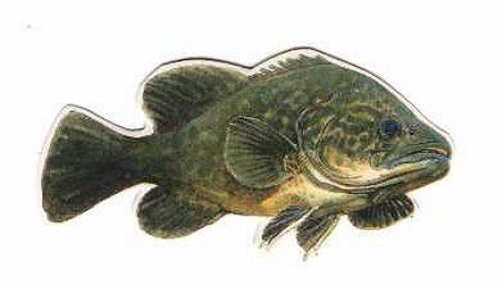
[Above] The Australian Murray Cod. (Illustration by artist unknown, year unknown)
Mulloka the Murray Cod was originally imprisoned in a small glass tank at The Freshwater Discovery Centre in Snob's Creek, Victoria, Australia. (formerly known as The Snob's Creek Visitor's Centre). Mulloka has been described as a 'conservation tool' by the Centre's Interpretation Officer Alex Caughey, in a confidential information release to the Department of Natural Resources and Environment (Fisheries Victoria), formerly The Department of Conservation and Natural Resources).
HOW MULLOKA WAS CAPTURED
Mulloka was caught by a cod angler named John Douglas on the Ovens River, in a place called Peechelba, downstream from Wangaratta in Victoria, Australia. He was one of three Murray Cod caught in a trap called a Murray River drum net in July 1986. It was described by Rod Cheetham, an former employee of The Freshwater Discovery Centre - Snob's Creek, as 'a traumatic process for the fish'.
John Douglas says, 'When we captured Mulloka, he was moving in response to a flood. When the river flows increase the cod get a bit more active and some move upstream. We were taking advantage of this movement to capture our brood fish'. The men involved were collecting brood stock Murray Cod for the captive breeding program at Snob's Creek Hatchery. John said "We had several drum nets along the stretch of the Ovens River that we were working and checking daily. When the net that contained Mulloka was lifted, ... a trip to town was quickly undertaken to notify Snob's Creek that we had a future display fish and to make arrangements for the fish to be transported back to Snob's'.
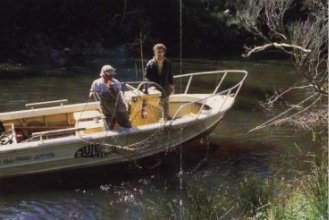 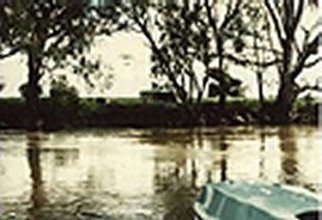
[Above Left] Ray Donald collecting broodstock with a drum net. A drum net was the tool used to capture Mulloka. (Photo by John Douglas, year unknown) [Above Right] This is a view of the camp from the boat, around the time of the capture of Mulloka. (Photo by John Douglas, year unknown)
'The next day, when the officer from Snob's Creek arrived, the net and Mulloka were lifted into the boat, quickly driven across the river. The fish was then removed from the net and carried (on the net) up the river bank and into the waiting water-filled tank on the trailer. In general, large Murray Cod are quiet, sedate and easy to handle. Apart from a few kicks they usually don't thrash around too much. You do not need to anaesthetise them for general handling such as moving the fish from the net into the transporter'.
'Mulloka was then driven down to Snob's Creek and given a salt and methylene blue bath (as a precaution to guard against any infection) and placed in a dam on a farm outside Alexandra. The dam was a typical farm dam in a sheep paddock. The dam would have been about 50 metres across the wall, perhaps 60-70 metres long and about 2-3 metres deep. At a later stage, Mulloka was moved again, this time into a swimming pool on site at Snob's Creek. There was another large cod in this pool but the two were separated by thick plastic mesh, to stop the two fish from fighting within a confined space.'
Of the three Cod originally captured, two were retained as potential display fish for the fisheries education program, and one (the biggest) was released back into the Ovens River. The two cod which were kept were transported to Snob's Creek and quarantined in a dam. They were later transferred to a large, above-ground, oval swimming pool where they could be 'assessed for suitability as display fish'. Mulloka was chosen while the second fish was left out on a farm dam. When I asked Alex Caughey why they chose Mulloka over the other Cod, he said that Mulloka is an extrovert, unlike the two other Murray Cod who were more interested in hiding or getting away.
This was the tragic beginning of Mulloka being gradually broken into captivity. Mulloka stayed in a farm dam for one year, and then was placed into a 3600 litre swimming pool, then half of that pool, and finally put into an isolation tank at The Freshwater Discovery Centre - Snob's Creek. Mulloka was taken from his natural river environment and was said to be 'progressively acclimatised to a small space, via this process.
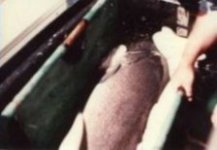 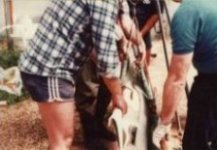 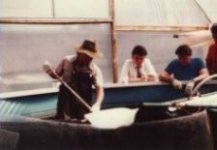
[Above Left to Right] In 1988 Mulloka was weighed and transfered from a closed-off dam to the tiny tank, where he now exists, in The Freshwater Discovery Centre. Rod Cheetham and company moving Mulloka from the pool. (Photo by photographer unknown, year unknown)
Mulloka now lives in solitary confinement at The Freshwater Discovery Centre - Snob's Creek and is unable to fulfill the natural behavioural patterns of a Murray Cod. The tank is almost the exact width of the fish from back-to-front, so when Mulloka faces into the Visitor's Centre, he is forced to adopt a slight angle. In the wild Murray Cod may form social groups, and have been known to swim 350 km upriver during the breeding season.
In the wild Mulloka would wait for prey to pass and select his food and, for territorial reasons, he would jump out and snatch his food. This could be anything from up to a five or a ten foot grab, and there may also have been a chase involved. Mulloka has no hope of moving inside this tiny tank to do anything at all.
At The Freshwater Discovery Centre in Snob's Creek, there is no natural environment, no muddy embankment, no hole or shelter for hiding in and under, no river current, no migration, no sunshine, no seasons, no natural diet and no company. A fish tank is not an ecosystem. The Murray Cod in Australia are a native fish and should be respected as such. While he remains a captive of this Centre:
1. Mulloka will never have a chance to swim in a river again.
2. Mulloka will never be able to defend his territory against other cod in the ecosystem of the Ovens River.
3. Mulloka will never have the room to dart in and out from beneath submerged logs or other cod hiding places for live prey. He will never be able to hunt for his own food as he would back in his natural river environment.
4. Mulloka will never be able to migrate upstream for hundreds of kilometres in response to and during a flood.
5. Mulloka will never be able to interact socially or to breed with another Murray Cod.
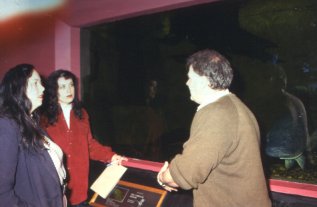 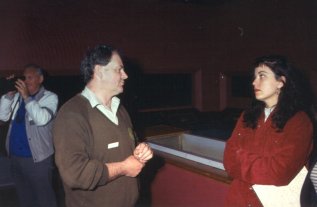
[Above Left to Right] Coral Hull, Nicki Booker and Alex McCaughey with Mulloka. Alex McCaughey saw nothing wrong with using the fish for educational purposes, even if it meant sacrificing the animal's well-being. (Photos by Sean Poyser, 1996)
WHAT WOULD MULLOKA DO IN THE WILD?
As John Douglas describes it, 'Mulloka would have started life as a small egg measuring about 4 mm diameter. The eggs would probably have been laid on a hard surface such as a log. Cod eggs are adhesive in contact with water and will stick to the surface where they are laid. Cod lay their eggs in a single layer. Not a bad feat when you consider the size of the fish and that a female can lay up to 60, 000 eggs! Mulloka's growth rate is not known but generally cod reach about 300 mm in their second year, 500 mm in their fifth year, about 800 mm in their tenth year. We used a Von Bertalanffy growth-in-length curve to estimate Mulloka's. Mulloka is about 1 metre in length and is thought to be 20-25 years old.
Murray Cod have been known to migrate 100 km and can travel up to 350 km at spawning time. Murray Cod are territorial fish and will often stay with an area or a log and dart in and out grabbing at prey along the river's banks. They move during higher periods of river flow such as winter and spring. This movement in Cod is generally thought to be related to the seasonal breeding habits of the fish.
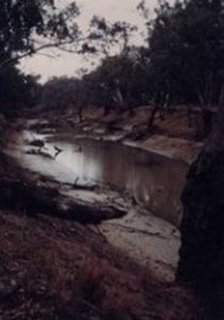 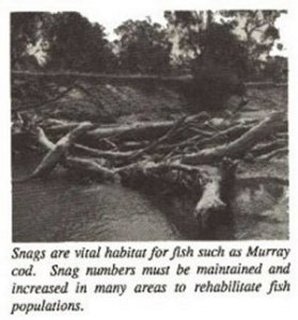
[Above Left] Examples of Australian inland rivers with tree root snags. This is where the Murray Cod live. The Murray River, Echuca, Victoria, Australia (Photo by Coral Hull, 1996) [Above Right] Australian River (Photo by photographer unknown, year unknown)
Recent studies in the Cod Watch Series showed that some Cod stay around one particular area of river for long periods at a time and may come back to the same spot after moving upstream. John Douglas says, 'In the wild as a very young fish, Mulloka would have eaten plankton, then as he grew would have taken larger items of food such as small shrimp, yabbies and small fish. The larger Mulloka grew, the larger the food items would get: and include larger fish, yabbies and probably even the spiny Murray Cray'.
A BARREN UNNATURAL ENVIRONMENT
Alex Caughey designed and built the tank in which Mulloka now lives in 1988. The internal dimensions of the tank are a mere 1200 mm x 1400 mm x 3100 mm. It holds 5200 litres of water with a temperature of 20C. This barren simulated environment is made of fibreglass. There is barely enough room for Mulloka to turn sideways in such a confined space. This appalling situation is the equivalent to one of us being locked inside a closet in solitary confinement for 11 years. Yet Alex Caughey seems to be very proud of his achievement, even though he admitted to me that he wished the tank could be bigger now.
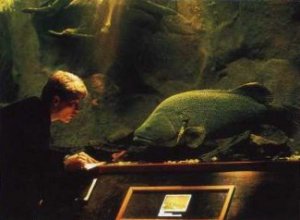 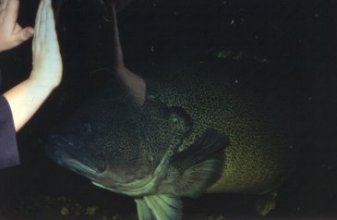
[Above Left] A visitor viewing Mulloka. (Photo by photographer unknown, year unknown) [Above Right] Nicki Booker's hands against the glass of the tiny tank. At times it seemed that we were never going to get Mulloka out of there. (Photo by Sean Poyser, 1996)
On one of my visits to The Freshwater Discovery Centre - Snob's Creek, Alex Caughey told me that Mulloka had previously impaled himself on the sharp tree trunk placed inside the tank. I noticed that Mulloka had two very large scars on his right side. When I asked how Mulloka got these scars, Alex Caughey said that he had been jabbed by the fake branches inside the tank while attempting to chasing the small fish (baby brown or rainbow trout) that they put in there for him to eat. The old dead branches have since been sawn off and filed to give them more rounded edges, but they still take up a large amount of space within the tiny display tank.
I was told by Alex that the tank is worth about $60,000. Instead of creating an unnatural prison for animals, all this money could have gone into public education about endangered or threatened cod or into making a natural reserve or sanctuary, for native fish such as the The Australian Murray Cod, along a large section of river.
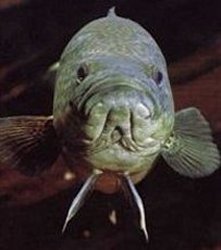 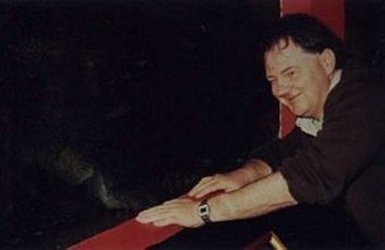
[Above Left] Australian Murray Cod. (Photo by photographer unknown, year unknown) [Above Right] Alex Caughey laughs at Mulloka in the tiny tank. (Photo by Sean Poyser, 1996)
WHAT ELSE DO THEY DO AT SNOB'S CREEK?
Rod Cheetham, a former employee and 'Education Officer' of The Freshwater Discovery Centre - Snob's Creek, supports Mulloka's imprisonment. Yet at the same time, while giving a talk to a group of people including myself, who were touring the Centre, he said '... It is very important that native fish have habitat. It's the difference between thriving and surviving. These people are experts on releasing Murray Cod.'
What he failed to mention, is that they have no intention of releasing Mulloka, and then when they have released Cod it is for the following reasons, as described by John Douglas in correspondence to me. John said it was for 'a propagation program which produces Murray Cod for stocking into public waters for recreational and/or conservation purposes (maiming and killing) and regularly changes it's broodstock for genetic reasons'.
'Recreational purposes' means that they breed Murray Cod for people to rip hooks through their mouths or for 'angling' as it's called. When I visited The Freshwater Discovery Centre, they were mainly releasing rainbow and brown trout, which are both introduced species into the river for angling purposes. I would hardly call this practice 'conservation-motivated.' The Freshwater Discovery Centre and hatchery appears to be another breeding centre for hunters of fish, thinly-disguised as an education tool for native fish conservation.
John Douglas is a self-described cod angler and researcher. Not suprisingly, killers of animals are often experts on the animals they kill. At The Freshwater Discovery Centre - Snob's Creek, these people want more fish in the rivers (introduced species such as the rainbow and brown trout) basically so people can fish them out again.
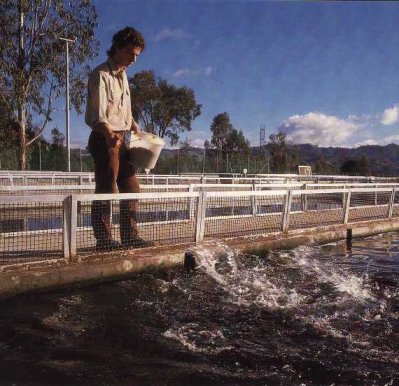
|
My question is this: How interested are they in the environment for the preservation of the Murray Cod for its own sake? And not because they mutilate The Murray Cod for sport? Mulloka, who now lives in solitary confinement, is merely a drawcard for a tiny Information Centre on the outskirts of Melbourne in Victoria, that has had its funding cut and its staff reduced since the election of the Kennett government.
Alex Caughey also told me that he and Rod Cheetham were talking about lighting up small sections of rivers for the tourists and stunning all the fish so that they float to the top, so that visitors could see exactly what it is that lives in the river (or what it was that used to live in the river). |
[Above] Rod Cheetham feeding introduced fish (adult trout) to be released into Australian rivers. (Photo by photographer unknown, year unknown)
When I asked what they feed Mulloka, Alex said, 'We feed him brown trout from the handling tank. We slice their eyes off so Mulloka won't damage himself while he chases them around the tank'. When I asked, 'how do you take their eyes out?' Alex smiled and produced a small pocket knife, 'With this! ...' he said.
The whole setup at The Freshwater Discovery Centre, is strange indeed. It appears that fish mutilations and electrifying rivers are the norm, and right in the middle of it is poor Mulloka, snatched from his Ovens River home, put into a tiny tank and left in solitary confinement for 11 years. In an amazing show of a lack of insight into animal nature, the centre even printed a pamphlet where Mulloka tells the reader how to go out and kill other Murray Cod in the Ovens River, and states that really he doesn't need to swim at all!
Don't let the upfront conservation image fool you. The Freswater Discovery Centre in Snob's Creek stocks Victoria's Rivers with whatever fish the anglers want to catch and that includes introduced species such as brown trout, rainbow trout and salmon. Angling fish whether they are native or introduced is a cruel bloodsport for cowardly people. We can protect and enjoy the native fish of Australia without killing and injuring them.
THE HORRIBLE HANDLING TANK AT THE FRESHWATER DISCOVERY CENTRE - SNOB'S CREEK
Just opposite to Mulloka's fibreglass enclosure, is the filthy overcrowded handling tank. It is literally jam-packed with small brown or rainbow trout. The long tank has an open top and is designed for people to put their hands down into it to 'handle' the fish. The trout are left in the handling tank for a period of 12 months. Alex informed me that they are basically underfed so that they don't grow too quickly. The result of this underfeeding is that they starve and start to feed off one another. The handling tank was putrid and was full of dying injured fish. I saw dead trout floating in the water. Many others were maimed, blind or suffering mutilations. Fish were without tails and fins. Tails and fins were being chewed off by other fish even as I watched. Some of the fish corpses had turned grey and were flaking apart in the water and being eaten by the other fish.
In addition, children were running their hands through this tank which can hardly be considered hygienic. They were also picking up fish and throwing them at each other. This is inhumane to the fish who could easy have suffered further injuries. The trout that I saw thrown would hit the sides of the handling tank and slip back down into the water. I went to look at one of these fish and it appeared to be stunned. This place is not under supervision, thus the children were allowed to engage in 'fish fights' with live fish. One boy was actually punching into the fish in the water on this occasion. On my first visit two children were throwing fish at one another in the complex. What I witnessed was appalling cruelty to animals under the guise of education.
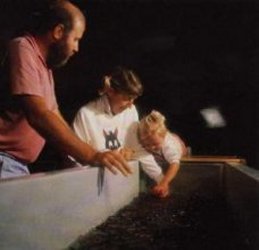 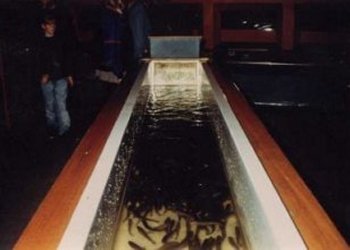
[Above Left] The filthy handling tank was full of injured and dying fish. (Photo by photographer unknown, year unknown) [Above Right] The Handling Tank, Snob's Creek, Victoria, Australia. (Photo by Coral Hull, 1996)
THE OBLIGATION TO AN AUSTRALIAN NATIVE FISH - THE THREATENED MURRAY COD
The Department of Natural Resources and Environment (Fisheries Victoria) has a responsibility and an obligation to protect native fish in Australia. It needs to be involved in preserving them and putting them back into the rivers, not imprisoning them, in isolation, in tiny tanks, as nothing more than a drawcard and showpiece for tourists. The label on Mulloka's viewing tank does little to educate the public about the social habits, breeding patterns and migration or movement of the Murray Cod in natural river environments.
The Murray Cod are a fish native to Australia. They have been described as presently 'under threat'. Mulloka is estimated to be between 20-25 years old. The oldest Murray Cod recorded is 100 years old. There could be decades of years left in him. He deserves to be kept in natural surroundings, not where he can't swim or move. Native fish such as the Murray Cod are wild animals. Film footage of wild Murray Cod and media education are the way to educate the public about animals and habitats. Keeping Murray Cod such as Mulloka, imprisoned in a tiny tank, is a financially irresponsible and ineffective way of educating people.

[Above] The Murray Cod is an Australian native fish living in inland rivers and lakes. (Artwork by artist unknown, year unknown)
WHAT DO WE WANT?
Mulloka needs to be taken out of solitary confinement in the tiny fibreglass tank and put back into the Ovens River, where he was originally captured. Specific steps need to be taken to ensure the safe rehabilitation and release of this unique native fish. A halfway house needs be set up for the preparation and release of Mulloka the Murray Cod, back into the wild. A large pool, a farm dam or a proper aquarium would provide a halfway house so that Mulloka can be released at some later stage.
Mulloka must be retrained and will survive out of captivity because he has been free before. Mulloka needs to be where he can at least move, swim and have company. He is a wild fish who is used to living in the wild. There needs to be a program where both cod, including the other cod (Mulloka's replacement) left in a local farm dam, can be released. Native Murray Cod are part of our heritage. The Freshwater Discovery Centre at Snob's Creek, needs to be concerned with rehabilitating them, not exploiting them. Go and see where Mulloka the Murray Cod is imprisoned for yourself. While you are there check out the handling tank. I'm sure you will be as horrified as I was. The Centre also needs to stop the breeding of other Murray Cod to replace Mulloka.
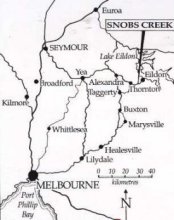 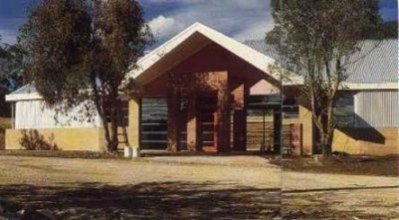
[Above Left] Location of The Freshwater Discovery Centre in Snob's Creek, Victoria, Australia. (Photo by photographer unknown, year unknown) [Above Right] Entrance to The Freshwater Discovery Centre. (Photo by photographer unknown, year unknown)
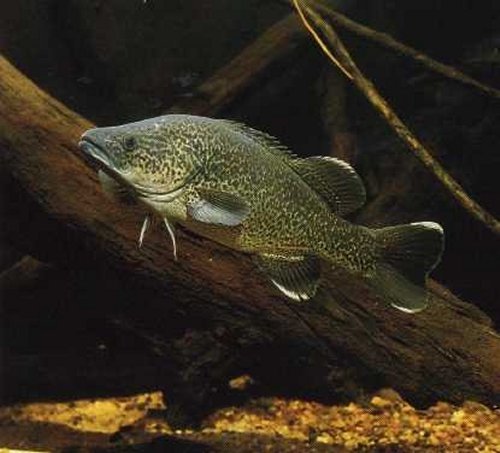
[Above] Murray Cod - Maccullochella peeli. (Photo by unknown photographer, unknown year)
Sources and References:
A Guide to The Freshwater Fish of Victoria, Philip Cadwallader and Gary N. Backhouse, 1983, Government Printer, Melbourne, 3000, Victoria, Australia. ISBN: 0-7241-8296.
CODWATCH (Newsletter), Cod Radio Tracking Project, PO Box 137, Heidelberg, Victoria, 3084, Australia.
Biological Information for Management of Native Freshwater Fish In Victoria, J.D.Koehn and W.G.O'Connor, The Victorian Government Printing Office on behalf of the Freshwater Fish Management Branch, 1990, Department of Conservation and Environment, Melbourne, Victoria, Australia. ISBN: 0-7306-0590-6.
About the Writer Coral Hull
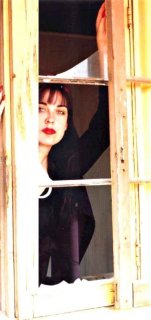
|
Coral Hull was born in Paddington, New South Wales, Australia in 1965. She spent her childhood in Liverpool, on the outer western suburbs of Sydney. Coral is a full-time writer specialising in poetry, experimental prose fiction, scripts and literary articles. Her work has been published extensively in literary magazines in the U.S.A., Canada, Australia and the United Kingdom. She is also the Editor of The Book of Modern Australian Animal Poems, an anthology of Australian poets writing about animals from 1900-1999. Her published books are: In The Dog Box Of Summer in Hot Collation, Penguin Books Australia, 1995, William's Mongrels in The Wild Life, Penguin Books Australia, 1996, Broken Land, Five Islands Press, 1997 and How Do Detectives Make Love?, Penguin Books Australia, 1998. Coral is an animal rights advocate and the Editor of Thylazine, an online literary magazine featuring articles, interviews, photographs and the recent work of Australian artists and writers working in the areas of landscape and animals. She completed a Bachelor of Creative Arts Degree (Creative Writing Major) at the University of Wollongong in 1987, a Master of Arts Degree at Deakin University in 1994, and a Doctor of Creative Arts Degree (Creative Writing Major) at the University of Wollongong in 1998. |
[Above] Photo of Coral Hull by Cliff Hull, 1999.
I Next I
Back I
Exit I
Thylazine No.1 (March, 2000) |



